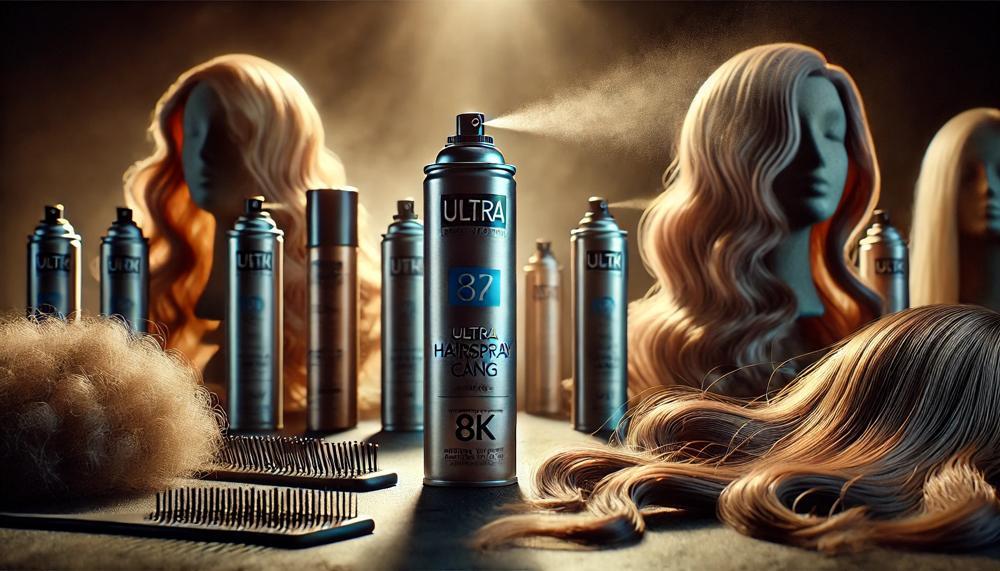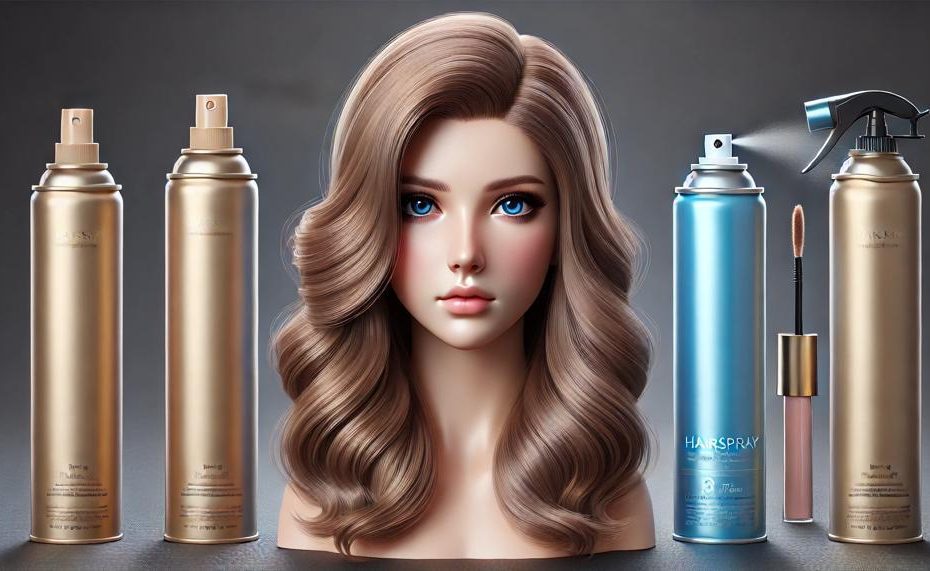Trying to keep your wig securely in place can be a frustrating struggle – but reaching for that can of hairspray is not the solution. The short answer is no, you should not use hairspray to glue down a wig. Here’s why:
- Hairspray lacks the strong adhesive properties needed to keep a wig firmly attached to your head.
- It can leave an unsightly sticky residue and unnatural finish on your wig fibers.
- Using hairspray in this way risks damaging both your wig and natural hair.
Instead, consider these key takeaways:
- Invest in specialized wig adhesives or tapes designed to provide a secure, long-lasting hold.
- Look for products that offer flexibility, comfort, and won’t cause irritation.
- Properly prepare your skin and follow application instructions for best results.
Don’t settle for a wig catastrophe. Learn the right way to keep your wig locked down flawlessly. The perfect adhesive solution awaits.
Table of Contents
- 1 What You’ll Learn
- 2 What are the best adhesives to use when gluing a wig down?
- 3 Are there any recommended glues that won’t damage the wig or scalp?
- 4 How long does the glue typically last before the wig needs to be re-glued?
- 5 Are there any specific instructions or tips for applying the glue and attaching the wig?
- 6 Can the type of wig material affect the type of glue that should be used?
- 7 Conclusion
What You’ll Learn
| Potential Risks | Explanation | Recommendation |
| Inadequate Hold | Hairspray lacks the adhesive strength to securely glue down a wig, leading to the wig shifting or falling off. | Use specialized wig adhesives or tapes designed for a secure and long-lasting hold. |
| Residue and Unnatural Finish | Hairspray can leave a sticky residue on the wig and scalp, creating an unnatural and unsightly appearance. | Opt for wig adhesives that provide a natural-looking finish and are easy to remove without damaging the wig or your natural hair. |
| Potential Damage | Using hairspray as a wig adhesive may cause damage to both the wig and your natural hair due to its harsh chemicals and lack of flexibility. | Choose wig adhesives specifically formulated to be gentle on wigs and hair while providing a secure hold. |
| Skin Irritation and Allergies | The chemicals in hairspray can potentially irritate the scalp or cause allergic reactions, especially with prolonged use. | Perform a patch test before using any wig adhesive to check for skin sensitivity. |
So, using hairspray to glue down a wig is not recommended due to its inadequate adhesive properties, potential for residue and damage, and the risk of skin irritation or allergies.

What are the best adhesives to use when gluing a wig down?
When it comes to securing a wig in place, selecting the appropriate adhesive is paramount. The most effective adhesives for this purpose are typically specialized wig adhesives designed to provide a strong, long-lasting hold while being safe for both the wig and your natural hair and scalp. Here are some of the best options:
| Adhesive Type | Description | Pros |
|---|---|---|
| Wig Tape | Double-sided adhesive tape specifically formulated for wigs. It comes in rolls or pre-cut strips. |
|
| Liquid Wig Adhesives | Water-based or solvent-based adhesives that are brushed or sprayed onto the hairline and allowed to dry before applying the wig. |
|
| Wig Adhesive Strips | Pre-cut adhesive strips designed for easy application along the hairline. |
|
When selecting a wig adhesive, it’s crucial to consider factors such as the type of wig you’re wearing, your skin type, and the level of hold you require. Additionally, always follow the manufacturer’s instructions carefully and perform a patch test to ensure you don’t experience any adverse reactions.
Are there any recommended glues that won’t damage the wig or scalp?
When it comes to securing a wig safely without causing damage, it’s crucial to choose the right adhesive. Here are some recommended options:
| Adhesive | Description | Benefits |
|---|---|---|
| Lace Front Adhesive | Specifically designed for lace front wigs with a thin lace material mimicking a natural hairline. | Gentle on skin, strong hold, can last several weeks without reapplying. |
| Spirit Gum | Made from natural resins, suitable for sensitive skin, often used for theatrical or costume purposes. | Gentle, strong hold, can last extended periods without reapplying, but may leave residue on wig. |
| Wig Tape | Available in various forms like double-sided tape, rolls, or strips, providing a temporary solution. | Gentle on skin, easy to apply, convenient for everyday use, but may require frequent reapplication. |
| Liquid Adhesive | Provides a strong and long-lasting hold, but must be specifically designed for wig use. | Strong hold, long-lasting, but regular liquid adhesives can damage wig and scalp, requires proper cleaning and removal. |
When selecting an adhesive, consider your wig type, skin sensitivity, and intended use. Proper cleaning and care of the wig after each use is essential to maintain its quality and prevent buildup or damage. By choosing the right adhesive and following instructions carefully, you can securely wear your wig without compromising its integrity or your scalp health.
How long does the glue typically last before the wig needs to be re-glued?
The short answer is that using hairspray as an adhesive for wigs is not recommended, as it is not designed for that purpose and will likely require frequent reapplication, potentially leading to damage to the wig and irritation to the scalp.
| Adhesive Type | Hairspray | Wig Adhesives |
| Intended Use | Styling hair | Securing wigs |
| Reapplication Frequency | Very frequent (every few hours) | Moderate (every few days to weeks) |
Hairspray is formulated to provide temporary hold and style to hair, not to create a durable bond between the wig and scalp. Its adhesive properties are relatively weak and will dissipate quickly, especially with movement, sweat, and exposure to heat or humidity. Consequently, you would likely need to reapply hairspray to your wig multiple times per day, which can lead to product buildup, scalp irritation, and potential damage to the wig fibers.
Instead, it is advisable to use wig adhesives specifically designed for this purpose. These products create a stronger, longer-lasting bond between the wig and skin, allowing for extended wear without frequent reapplication.
Are there any specific instructions or tips for applying the glue and attaching the wig?
Here are some recommended techniques and tips for properly applying glue and attaching a wig:
| Preparation |
|
| Application |
|
| Tips and Tricks |
|
Can the type of wig material affect the type of glue that should be used?
| Wig Material | Recommended Glue Type | Notes |
| Lace Front Wigs | Wig adhesives or lace tints | Lace front wigs have a sheer lace base at the front hairline, requiring specialized adhesives to blend seamlessly with the skin. |
| Full Lace Wigs | Lace adhesives or liquid adhesives | Full lace wigs have a lace base all around, necessitating strong, flexible adhesives that can securely bond the entire wig to the head. |
| Synthetic Wigs | Wig tapes or double-sided tapes | Synthetic wigs are often secured using tapes, as adhesives may not adhere well to the synthetic fibers or cause damage. |
The type of wig material significantly impacts the choice of glue or adhesive for securing a wig. Lace front wigs, which have a sheer lace base at the front hairline, require specialized wig adhesives or lace tints that can blend seamlessly with the skin tone and create a natural-looking hairline. Full lace wigs, on the other hand, have a lace base all around and typically require strong, flexible lace adhesives or liquid adhesives that can securely bond the entire wig to the head while allowing for movement and breathability.
For synthetic wigs, adhesives may not be the best option, as they can potentially damage or cause the synthetic fibers to deteriorate. Instead, wig tapes or double-sided tapes are often recommended, as they provide a secure hold without compromising the integrity of the synthetic material.
Conclusion
Securing a wig with hairspray is akin to building a house on shifting sands – a recipe for an inevitable mess. While the temporary hold may seem tempting, hairspray simply lacks the adhesive strength to keep your wig locked down. Instead of fighting an uphill battle, invest in specialized wig adhesives designed to provide a firm yet flexible bond.
These professional-grade products not only ensure your wig stays put through daily activities but also safeguard the integrity of the wig fibers and your natural hair. No more worrying about unsightly residue or that dreaded wiggle as you move. Proper wig adhesives allow you to style your wig with confidence, knowing it will remain seamlessly in place.
Don’t settle for quick fixes that compromise your look. Bid farewell to the hairspray hassle and embrace the world of wig-friendly adhesives. With the right products and application techniques, you can achieve a flawless, long-lasting wig installation that complements your unique style.






